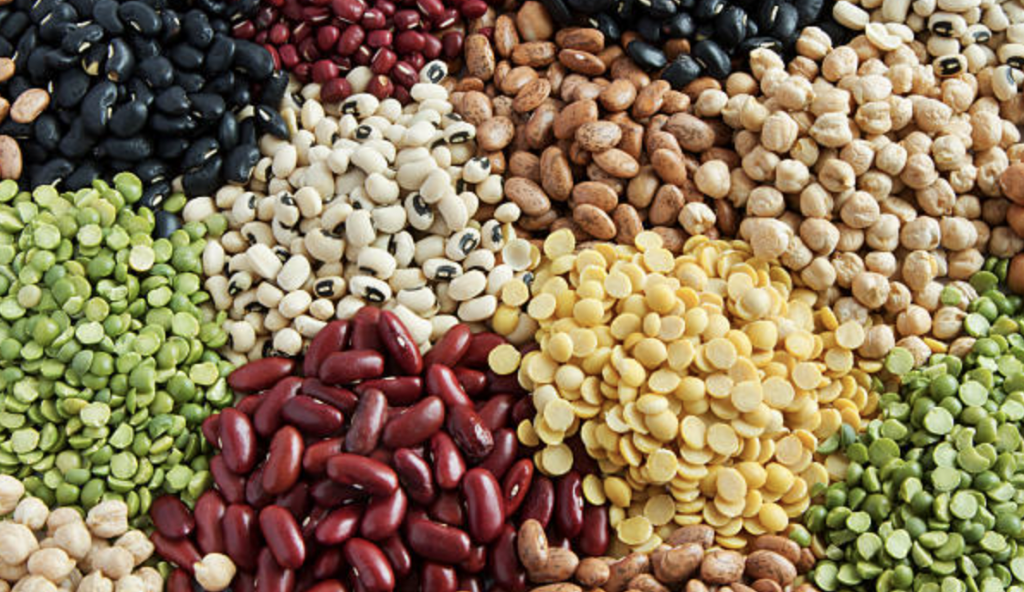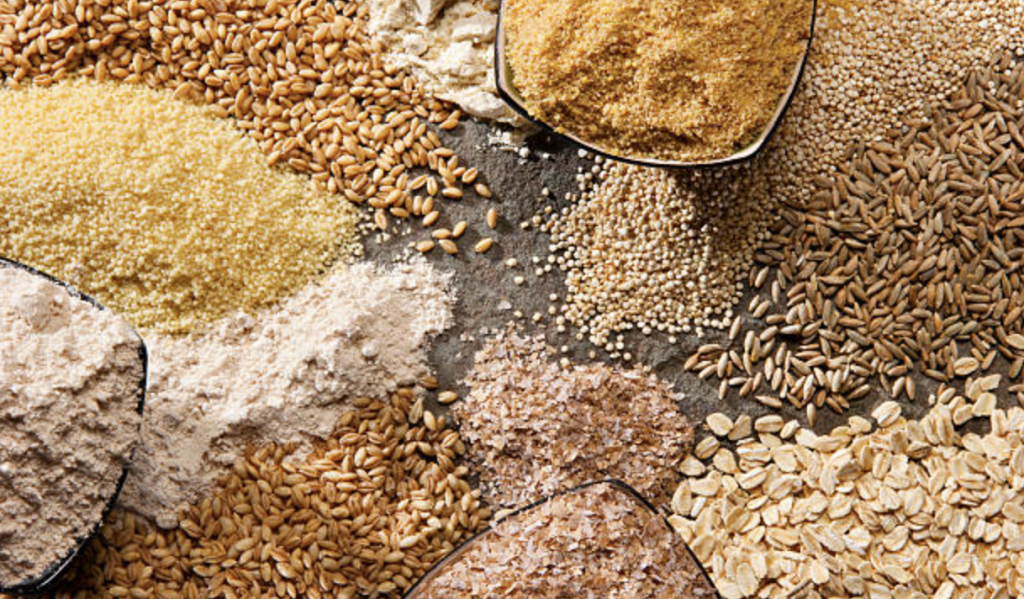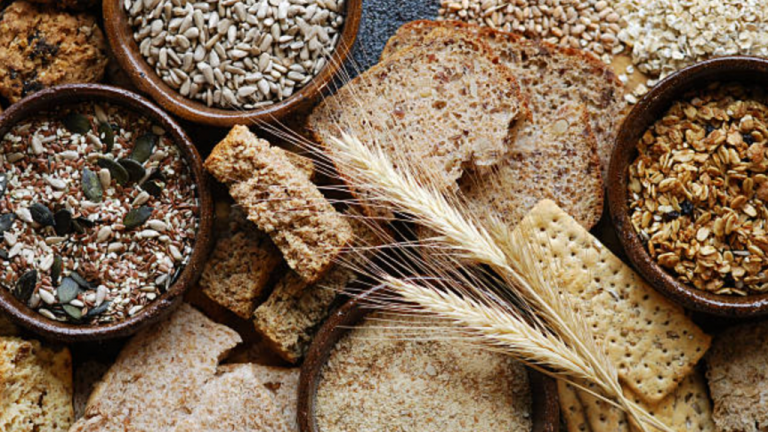Agriculture is harvesting and distributing agricultural products such as cereals, animals, sugar, and soybeans, among others—other companies in the industry companies manufacture agricultural machinery, packaged foods, and fertilizers.
Table of Contents
An Overview of Agriculture
Numerous extremely affluent individuals have expressed interest in farms. Reportedly, billionaires such as Bill Gates and Jeff Bezos have acquired farmland in recent years. Of course, getting your land for growing wheat or other agricultural products is difficult for most investors. Because cereals play a significant role in international trade, we’ll analyze eleven wheat-related equities.

Top 12 Grain Stocks to Invest Now
1. Deere and Co.
Deere and Company, also known as John Deere, is one of the most recognizable American agricultural companies. It also produces wheat planting and harvesting combines.
In recent years, John Deere has invested in agricultural automation-related technologies. Early in 2022, it unveiled an utterly autonomous tractor that can carry out predetermined tasks while a farmer checks its progress through a mobile device. Given the escalating costs of wheat and other agricultural products and the need to feed a continually expanding global population, adding automation to boost crop efficiency could be an essential requirement in the coming decades.
2. Archer Daniels Midland Company
One of the largest companies in the US is Archer Daniels Midland Company, a world-renowned leader in the food processing industry. The Company was established in 1902 in Minneapolis, Minnesota. Since then has overseen the operations of a food processing plant, a grain elevator, and a transportation system for cereal grains like oats, milo, wheat, and barley. In addition to acquiring raw materials, the transportation system washes, stores, and distributes them to essential consumers.
Ag Services & Oilseeds, Carbohydrate Solutions, and Nutrition are the three divisions through which the Company operates. By February 2022, the Company will have priced its first sustainable bond, supporting efforts related to the Company’s environmental, social, and governance objectives (ESG). The business intends to use the net proceeds from the offering to finance and refinance projects that meet the criteria established in its Sustainable Financing Framework.
ADM is the ticker for Archer Daniels Midland Company on the New York Stock Exchange. The firm went public for $42.39 and is now trading at $95.71, giving in a market cap of $53.19B. Over the past four years, Archer Daniels Midland Company has maintained solid performance across all of the most critical metrics, including a gross margin of 8.51 percent, a net profit margin of 2.70 percent, and an operating margin of 5.00 percent, and a return on investment of 6.60 percent.
3. Seaboard
Seaboard is another company involved in the food supply chain, trading and transporting agricultural products internationally. Wheat and other grains are among the commodities it deals with.
This global agricultural stock has a notoriously high stock price (now approximately $4,000 per share) because the corporation has never allowed a stock split. Seaboard has maintained consistent sales growth over decades, and owners have enjoyed consistent share price increases during this time.
4. Bunge Ltd.
Bunge Limited was established in 1818 and has its headquarters in St. Louis, Missouri; it is a global agricultural and food enterprise. It procures, processes, and distributes oilseed, grain, and ingredient products. In addition to its agriculture operations, the corporation has four more divisions: edible oil products, milling goods, sugar, bioenergy, and fertilizers.
For investors’ sake, remember that Bunge is not a narrowly focused wheat merchant, and shares have risen so far this year partly because of this. More than 70,000 farmers and 31,000 workers at more than 360 port terminals, oilseed processing plants, grain elevators, and food and ingredient processing and packaging facilities worldwide benefit from Bunge’s sustainable solutions and possibilities.
Bunge has been active in several ways, including announcing a joint venture with Chevron in September 2021 to meet the demand for renewable fuels and develop lower carbon intensity fuels. The Company also planned to open a sustainable production facility in the Port of Amsterdam in November 2021, and the facility is anticipated to be finished in 2024.
BG is the ticker symbol for Bunge stock on the NYSE. The firm went public at $60.10 and trades at $120.06, doubling its worth, with a market capitalization of $16.8 billion. Considering the past four years, we can discuss the following key indicators: Gross margin was 8.92%, the net profit margin was 0.82%, operating margin was 6.84%, and return on investment was 3.53% for Bunge.
5. CME Group
For investors’ sake, remember that Bunge is not a narrowly focused wheat merchant, and shares have risen so far this year in part because of this. More than 70,000 farmers and 31,000 workers at more than 360 port terminals, oilseed processing plants, grain elevators, and food and ingredient processing and packaging facilities worldwide benefit from Bunge’s sustainable solutions and possibilities.
The CME Group Inc. enables trading on various markets, including agricultural products, currencies, energy, interest rates, metals, stock indexes, and cryptocurrencies, among other asset classes. The Company also offers traders tools and resources, such as a market news feed and a website for trading education.
CME Group Inc. is publicly traded on the NASDAQ under the CME ticker. The firm went public with a share price of $78.93. Since then, its value has nearly tripled, reaching $242.14 and a market capitalization of $86.2 billion. Considering the past four years, the Company’s gross margin is 79.39%, its net profit margin is 59.75%, its operating margin is 56.40%, and its return on investment has been 9.12 %.
6. The Andersons
The Andersons is another agricultural supply chain company. It purchases and sells essential commodities and manufactures sustainable fuels, such as corn-derived ethanol. However, because of inflation, the plant nutrition business has been expanding since the epidemic began.
In addition to being a highly cyclical stock, The Andersons has been highly cyclical due to its commodity business. Higher sales owing to inflation do not necessarily translate into higher earnings, yet the Company has given a consistent dividend for many years.
7. Corteva Inc.
Corteva, Inc., a provider of agricultural products, has its headquarters in Wilmington, Delaware, United States, and serves clients in the United States, Canada, Latin America, Asia Pacific, Europe, the Middle East, and Africa. It was started in 1897, but the Corteva AgriscienceTM trademark was not established until 2018. Additionally, it was a subsidiary of DowDuPont until June 2019, when it became an independent corporation.
Technology solutions focusing on seed and crop protection increase resistance to weather, diseases, insects, and weeds and improve food quality. Corteva collaborates with global producers to develop an agricultural ecosystem that benefits people, progress, and the environment.
CTVA is the NYSE ticker symbol for Corteva. Since its inception in 2020 with a share price of $37.08, it has nearly quadrupled to $60.43 with a market capitalization of $43.42 billion. The Company has a gross margin of 36.67%, a net profit margin of -4.38%, an operating margin of 8.59%, and a return on investment of 0.62%, based on the four most significant indicators during the past four years.
8. Mosaic Company
The Company was created in 2004 in Tampa, Florida, where its offices were located. It works internationally and specializes in producing agricultural phosphates and potash through its subsidiaries. In addition, the corporation collects urea for use in fertilizers through several international distribution networks, making it the largest potash and phosphate fertilizers producer in the United States.
Mosaic is involved in every phase of crop nutrition, from resource extraction to manufacturing crop nutrients, feeds, and industrial goods for clients worldwide, and employs more than 12,525 people in chemical agriculture today.
Mosaic’s stock trades on the New York Stock Exchange under MOS. It was initially priced at $66.70 per share and now trades at $75.37 with a market cap of $27.22 billion. The Company has a gross margin of 26.04%, a net profit margin of 2.47%, an operating margin of 22.56%, and a return on investment of 2.23%, according to the critical indicators over the past four years.
9. Darling Ingredients Inc
Darling Ingredients, Inc. develops and manufactures natural ingredients derived from edible and non-edible bio-nutrients. It operates through Feed Ingredients, Food Ingredients, and Fuel Ingredients segments. The Feed Ingredients section consists of fats, proteins, discarded cooking oil, trap grease, food residuals, Rothsay ingredients, and specialty ingredients. The Food Ingredients section includes gelatin, natural casings, meat by-products, and specialty goods. Biofuel and bioenergy services are included in the Fuel Ingredients sector. The business was established in 1882 and had its headquarters in Irving, Texas.
10. Adecoagro S.A.
Adecoagro was founded in 2002 in Luxembourg and had its headquarters there. In addition to Brazil, Argentina, and Uruguay, the Company owns a variety of agricultural enterprises in other South American nations. Agriculture, dairy operations, sugar production, land transformation, ethanol generation, and energy production are among its activities.
The corporation held 220,186 hectares, comprising farms in Argentina, Brazil, and Uruguay, and 241 megawatts of installed cogeneration capacity by the end of 2020. It presently employs 8,716 people and operates in the agriculture or milling industries.
It began trading at $7.87 per share and is now trading at $12.37, resulting in a slight gain in per-share value, with a market capitalization of $1.43 billion. It has a gross margin of 13.28%, a net profit margin of -0.59%, an operating margin of -4.16%%, and a return on investment of -0.16%, based on the key metrics over the past four years.
11. CF Industries
CF Industries Holdings, Inc. manufactures hydrogen and nitrogen compounds for clean energy, fertilizers, pollution reduction, and other industrial uses. The corporation was started in 1946 in Deerfield, Illinois, and operated internationally.
The Company’s sectors include ammonia, granular urea, UAN, AN, and others, and its principal product is anhydrous ammonia (ammonia), composed of 82% nitrogen and 18% hydrogen. It employs 3,000 people and is part of the agricultural chemicals sector.
CF Industries is listed on the New York Stock Exchange under CF. In 2015, this firm’s share was worth $59.33; it is now at $109.69, giving it a current market capitalization of $22.19 billion. In addition, the Company’s critical indicators for the past four years include a gross margin of 33.91 percent, a net profit margin of 9.53 percent, an operating margin of 30.50 percent, and a return on investment of 6.64 percent.
12. AGCO Corporation
AGCO Corporation is an American manufacturer and distributor of agricultural equipment, including, among others, grain storage bins, high horsepower tractors, seed processing systems, ventilation, and water systems. The Company, created in 1990 and headquartered in Duluth, Georgia, operated internationally and was engaged in international business.
GCO is a global leader in designing, producing, and distributing intelligent agricultural solutions. More than 20,000 employees in over 35 countries are involved in producing industry-leading solutions that solve real-world challenges in the trucking and construction industries (or farm machinery)
The stock symbol for AGCO on the New York Stock Exchange is AGCO. In 2011, its share price was $51.33, which has since risen to $137.67, resulting in a market capitalization of $10.23 billion. Considering its crucial performance metrics during the past four years, it has a gross margin of 22.52%, a net profit margin of 3.88%, an operating margin of 9.10%, and a return on investment of 8.33%.

2 Fastest Growth Grain Stocks in 2022
1. Verde AgriTech PLC
Verde AgriTech is a U.K.-based firm specializing in the production of potash fertilizers. Its fertilizers contain potassium, sulfur, and magnesium, among other minerals. Additionally, the Company’s stock trades over-the-counter (OTC) in the United States under the symbol AMHPF. Mid-May saw the release of financial results for the first quarter of the fiscal year 2022, which concluded on March 31, 2022. Significant improvement from the prior-year quarter’s net loss of CA$1.8 million to the current quarter’s net profit of CA$3.0 million. Revenue approximately 14-fold increased. Since Verde AgriTech’s EPS changed from damaging in the prior year’s quarter to positive in the most recent quarter, a growth rate for EPS could not be determined in the table above.
2. Nutrien Ltd.
Canadian-based agricultural service and product supplier Nutrien Ltd. Potash, nitrogen, and phosphate are just some retail options available to farmers. Nutrien trades on the New York Stock Exchange under the ticker symbol NTR (NYSE). On May 1st, the Company released its financial results for the first quarter of the fiscal year 2022, which ended on March 31st. The current quarter’s net income climbed by more than ten times on the strength of sales growth of 64.4% compared to the year before.
Is Grain Stock a Good Investment?
We have shown throughout this essay that this commodity is significant and has a high profit-making potential because of its rich historical background and high global demand for its nutritional value and as a derivative in other industries.
To ensure that we are on the same page, we will explore particular aspects determining if investing in wheat in large firms is prudent through our suggested broker, eToro.
Speculation Regarding Demand Expansion
Due to this variety’s resiliency and ease of cultivation, the grain’s qualities could support continued global demand increase. Unlike rice and other food products, it requires less water and effort. This way, wheat could become the preferred grain in developing economies worldwide. Wheat competes with corn for field space.
The shift toward biofuel production may cause a shortage of wheat and increased costs. In addition, as a result of the current state of conflict, where Russia and Ukraine are the major exporters of wheat, the price of wheat will increase, and new businesses will develop to serve this market.
Attractive Option for Investment
Listed below are a few reasons why agricultural commodities continue to be a desirable investment: Agricultural commodities have outperformed the broader market over the past several years; corn, wheat, and RJA were the top-performing ETFs in terms of one-year trailing total yield, with futures contracts for wheat, soybeans, and maize among their top holdings.
The graph demonstrates that the companies whose wheat stocks we are reviewing are profitable and have a high market capitalization, indicating that prices will continue to grow. Wheat had a value of $423 in 2019, $1,093 as of February 22, 2022, and $1,208.06 on February 22, 2022, doubling in value during the three years.
Taking Precautions Against Inflation
Wheat and other soft commodities tend to increase in price when inflation rises. Inflation happens when money loses value over time, resulting in a rise in the cost of living—investing in wheat when inflation rates are rising is, therefore, a practical approach to protecting or ‘hedging’ against inflation.
Wheat typically benefits from growing inflation, particularly unexpected inflation, since as demand for products and services rises, the prices of goods and services and the prices of the commodities needed in their production also rise.
Diversifying Investment Portfolios
Wheat is a fantastic strategy to diversify a portfolio and include a globally-used commodity, as opposed to the preference of many investors for equities, bonds, and shares. By integrating wheat stocks into your investment portfolio, you can diversify your holdings and bolster your portfolio amid volatile market conditions.
Final Thoughts
With grain and other food prices rising dramatically, pursuing expanding enterprises in this industry is enticing. Be cautious, however. Investing in commodities firms can be highly volatile, as the market pricing of fundamental goods can rapidly alter revenue and profitability. Nevertheless, as inflation is a big concern among investors, it may be prudent to include a little exposure to grains in one’s portfolio.




